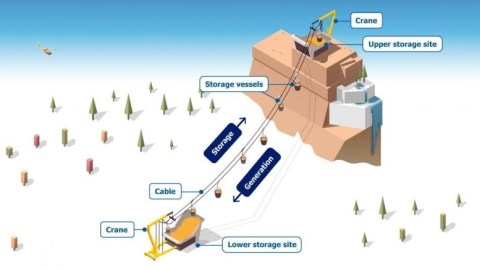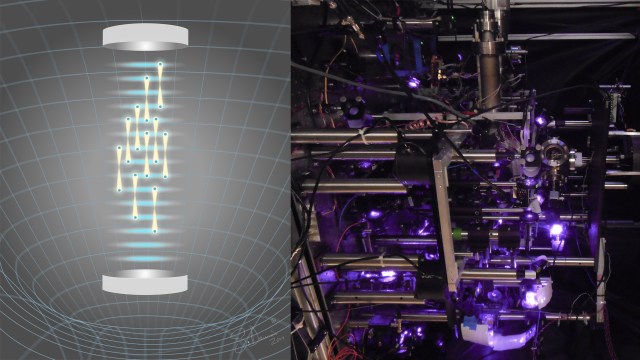Scientists want to use mountains like batteries to store energy

Credit: IIASA
- A new paper outlines using the the Mountain Gravity Energy Storage (or MGES) for long-term energy storage.
- This approach can be particularly useful in remote, rural and island areas.
- Gravity and hydropower can make this method a successful storage solution.
Can we use mountains as gigantic batteries for long-term energy storage? Such is the premise of new research published in the journal Energy.
The particular focus of the study by Julian Hunt of IIASA (Austria-based International Institute for Applied Systems Analysis) and his colleagues is how to store energy in locations that have less energy demand and variable weather conditions that affect renewable energy sources. The team looked at places like small islands and remote places that would need less than 20 megawatts of capacity for energy storage and proposed a way to use mountains to accomplish the task.
Hunt and his team want to use a system dubbed Mountain Gravity Energy Storage (or MGES). MGES employs cranes positioned on the edge of a steep mountain to move sand (or gravel) from a storage site at the bottom to a storage site at the top. Like in a ski-lift, a motor/generator would transport the storage vessels, storing potential energy. Electricity is generated when the sand is lowered back from the upper site.
How much energy is created? The system takes advantage of gravity, with the energy output beingproportional to the sand’s mass, gravity and the height of the mountain. Some energy would be lost due in the loading and unloading process.
Hydropower can also be employed from any kind of mountainous water source, like river streams. When it’s available, water would be used to fill storage containers instead of sand or gravel, generating electricity in that fashion. Utilizing the mountain, hydropower can be invoked from any height of the system, making it more flexible than usual hydropower, explains the press release from IIASA.
There are specific advantages to using sand, however, as Hunt explained:
“One of the benefits of this system is that sand is cheap and, unlike water, it does not evaporate – so you never lose potential energy and it can be reused innumerable times,” said Hunt. “This makes it particularly interesting for dry regions.”
Energy From Mountains | Renewable Energy Solutions
Where would be the ideal places to install such a system? The researchers are thinking of locations with high mountains, like the Himalayas, Alps, and Rocky Mountains or islands like Hawaii, Cape Verde, Madeira, and the Pacific Islands that have mountainous terrains.
The scientists use the Molokai Island in Hawaii as an example in their paper, outlining how all of the island’s energy needs can be met with wind, solar, batteries and their MGES setup.

The MGES system.
Credit: IIASA
“It is important to note that the MGES technology does not replace any current energy storage options but rather opens up new ways of storing energy and harnessing untapped hydropower potential in regions with high mountains,” Hunt noted.
Check out the new study “Mountain Gravity Energy Storage: A new solution for closing the gap between existing short- and long-term storage technologies”.





